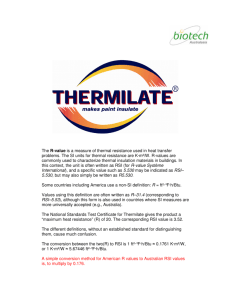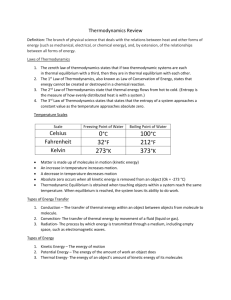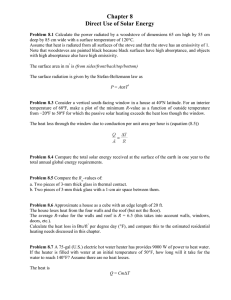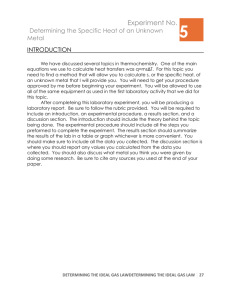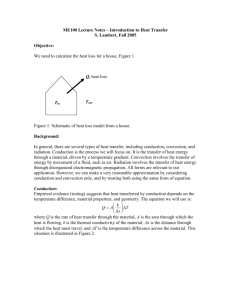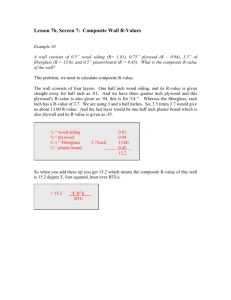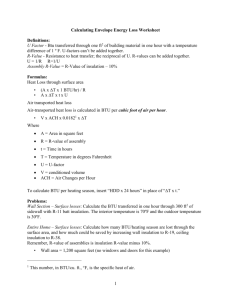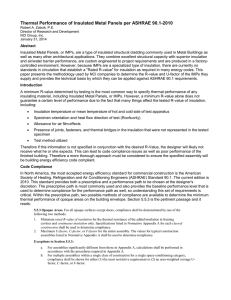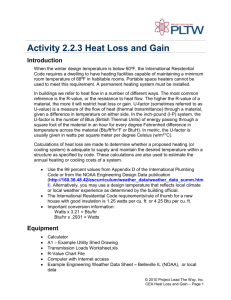Insulation values : units of measurement and relationship between
advertisement
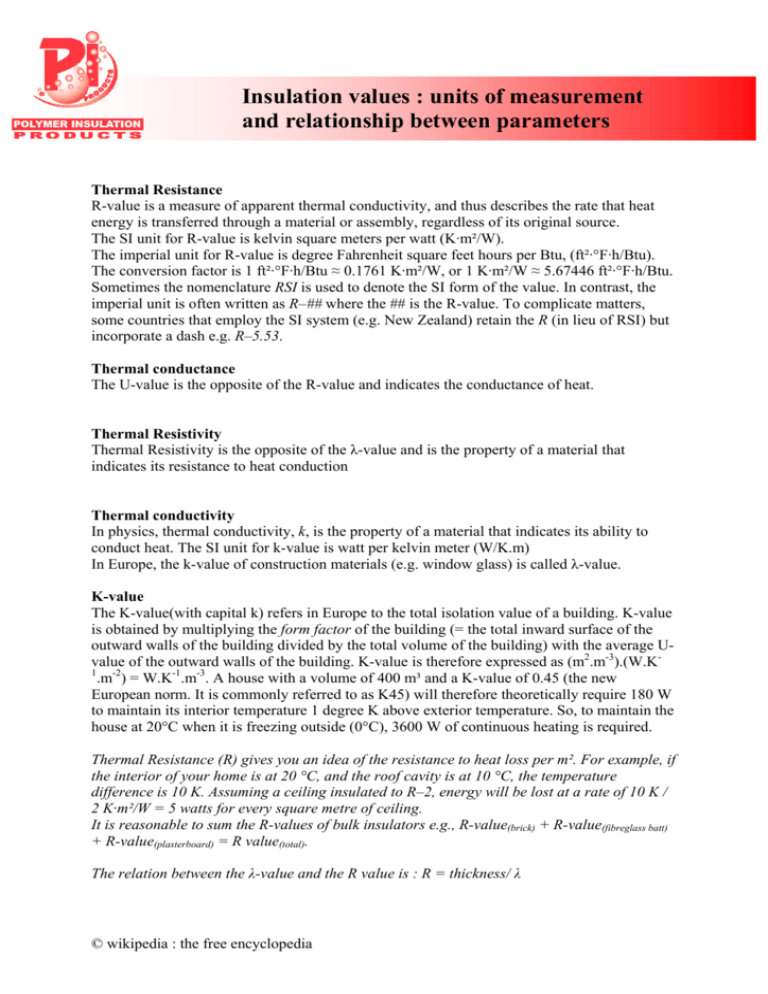
Insulation values : units of measurement and relationship between parameters Thermal Resistance R-value is a measure of apparent thermal conductivity, and thus describes the rate that heat energy is transferred through a material or assembly, regardless of its original source. The SI unit for R-value is kelvin square meters per watt (K·m²/W). The imperial unit for R-value is degree Fahrenheit square feet hours per Btu, (ft²·°F·h/Btu). The conversion factor is 1 ft²·°F·h/Btu ≈ 0.1761 K·m²/W, or 1 K·m²/W ≈ 5.67446 ft²·°F·h/Btu. Sometimes the nomenclature RSI is used to denote the SI form of the value. In contrast, the imperial unit is often written as R–## where the ## is the R-value. To complicate matters, some countries that employ the SI system (e.g. New Zealand) retain the R (in lieu of RSI) but incorporate a dash e.g. R–5.53. Thermal conductance The U-value is the opposite of the R-value and indicates the conductance of heat. Thermal Resistivity Thermal Resistivity is the opposite of the λ-value and is the property of a material that indicates its resistance to heat conduction Thermal conductivity In physics, thermal conductivity, k, is the property of a material that indicates its ability to conduct heat. The SI unit for k-value is watt per kelvin meter (W/K.m) In Europe, the k-value of construction materials (e.g. window glass) is called λ-value. K-value The K-value(with capital k) refers in Europe to the total isolation value of a building. K-value is obtained by multiplying the form factor of the building (= the total inward surface of the outward walls of the building divided by the total volume of the building) with the average Uvalue of the outward walls of the building. K-value is therefore expressed as (m2.m-3).(W.K1 .m-2) = W.K-1.m-3. A house with a volume of 400 m³ and a K-value of 0.45 (the new European norm. It is commonly referred to as K45) will therefore theoretically require 180 W to maintain its interior temperature 1 degree K above exterior temperature. So, to maintain the house at 20°C when it is freezing outside (0°C), 3600 W of continuous heating is required. Thermal Resistance (R) gives you an idea of the resistance to heat loss per m². For example, if the interior of your home is at 20 °C, and the roof cavity is at 10 °C, the temperature difference is 10 K. Assuming a ceiling insulated to R–2, energy will be lost at a rate of 10 K / 2 K·m²/W = 5 watts for every square metre of ceiling. It is reasonable to sum the R-values of bulk insulators e.g., R-value(brick) + R-value(fibreglass batt) + R-value(plasterboard) = R value(total). The relation between the λ-value and the R value is : R = thickness/ λ © wikipedia : the free encyclopedia
